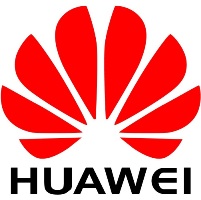  China Mobile, SAIC Motor, and Huawei Technologies, on Wednesday jointly demoed the world's first 5G based remote driving technology with a consumer car at the Mobile World Congress Shanghai 2017. Their demonstration verified the high-bandwidth, low-latency potential in C-band frequency, laying a foundation for future development of connected smart vehicles. This demo marks an important milestone in improving the reliability of autonomous and driverless vehicles, and also a major step forward in commercial application.
Huawei provided the 5G wireless solution that connected SAIC Motor's smart concept car, the iGS. China Mobile provided the connectivity. Working closely together, the three companies successfully demonstrated the world's first remote driving field test for a real consumer vehicle on a 5G network.
In the test, the driver was located over 30 kilometers away from the vehicle. Several high-definition video cameras installed in the vehicle sent multiple real-time HD video feeds to the driver, providing him with a 240-degree view of the vehicle's surroundings over a high-bandwidth 5G network. (Including peripheral vision, without turning their head, an average person has a binocular visual field of around 180-190 degrees). Control signals for the steering wheel, gas pedal, and brakes were also transmitted over the 5G network, which provided the ultra-low latency needed to support instant response to different roadside conditions. From his remote position, the driver was able to maintain full control over the vehicle at all times.
The low latency and high bandwidth of 5G networks are essential to meeting the requirements of remote driving applications for HD video streaming, fast response, and reliable connections. In this particular test, 5G's ultra-high bandwidth provided the required speed for flawless HD video connections between the vehicle and the driver at all times. End-to-end latency for all vehicle control functions was less than 10 milliseconds (the latency for the 5G new air interface itself was less than one millisecond). This means that, when the vehicle was traveling at 30 km/h, the distance it traveled between braking and actual deceleration was only eight centimeters. In extreme conditions, immediate emergency braking is critical to ensuring safety.
Remote driving has a broad range of potential applications in the future, especially in particularly harsh or dangerous environments like mining sites and waste disposal sites, or when remote work is more efficient, like compacting large swaths of soil with a remote-controlled steamroller. Remote driving can also be used to complement autonomous vehicles. For example, with remote driving, a single person can control an entire fleet of vehicles or manually intervene in situations that require human input, such as remote management of car-sharing resources, or in emergency situations, such as rescue missions in disaster zones.
As digital transformation picks up pace around the world, connected smart cars will become a primary focus of the information and communications technology industry. China Mobile, SAIC Motor, and Huawei are actively engaged in the research, development, and field-testing of solutions for real-life 5G autonomous driving applications, work that is essential to making next-generation transportation infrastructure a reality. |